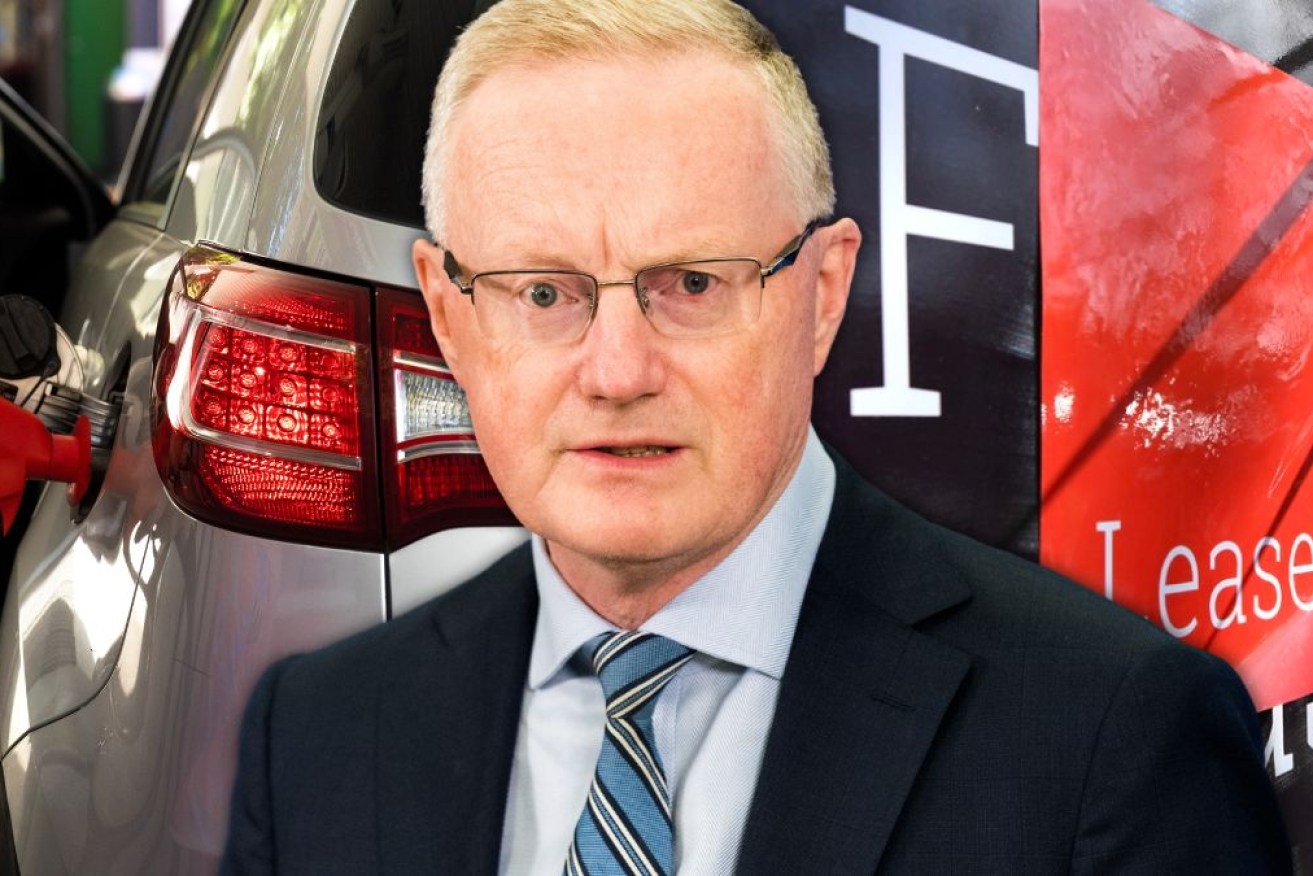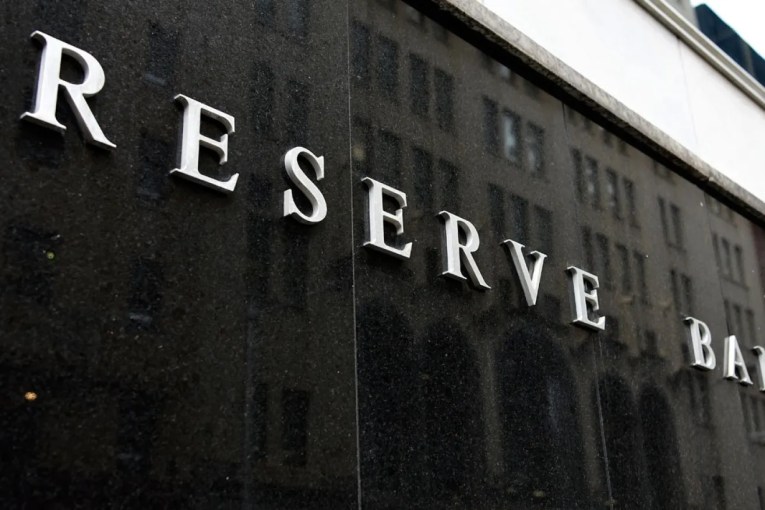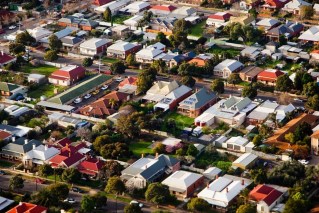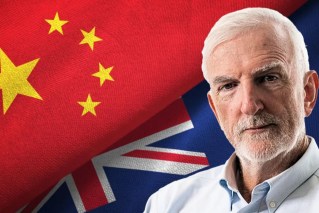Michael Pascoe: Is the RBA acting out of spite or just lost the plot?


Philip Lowe and the RBA appear focused on taming inflation and ignoring the consequences, Michael Pascoe writes. Photo: TND/Getty
Passing without notice in April, the Reserve Bank pulled a neat little trick, apparently making multiple billions of dollars in losses “disappear”.
I’ve heard a rumour Treasury was shocked to realise the RBA was technically insolvent, operating at a loss thanks to marking the value of its massive COVID bond purchases to market. (If the rumour is true, Treasury is even more incompetent that previously thought.)
Unlike Silicon Valley Bank, sent broke when forced to market its losses on government bonds, the RBA will not go broke. It is holding the bonds to maturity and thus will get its money back. It is not actually a problem.
But it nonetheless might have been embarrassing to have the monthly RBA chart pack showing the accumulated losses so obviously and its capital and reserve fund wiped out.*
Here’s the graph that had been running:
But all of a sudden that embarrassing blue line has disappeared from the current chart pack.
Oh, if only all losses were so easily managed.
What changed?
Asked about the much cleaner look for the bank’s liabilities, a bank spokesperson said the accumulated losses were now included in “other liabilities” and that “this change was to make the chart consistent with the Statement of L&A and the A1 Tables. The accounting treatment of the losses (and Accumulated Losses) is explained in the Annual Report”.
Funny, to my naked eye, I can’t see “other liabilities” have expanded to the extent of including the previous “accumulated losses”, but what would I know – it’s not as if I work for PWC, the RBA’s auditors.
If that all sounds a little snarky, it is, for the RBA’s weak statement and harsh interest rate decision on Tuesday has brought forth deserved snark, with nothing snarkier than asking if the RBA board is acting out of spite or has it simply lost touch with reality?
The review of the RBA adopted without reservation by Treasurer Jim Chalmers – and without consultation with the RBA – wanted the bank to focus more tightly on getting inflation quickly into the two-to-three per cent band and criticised it for not doing so in the past.
So if that’s what you want, Treasurer, here’s some more tightly focused monetary policy – cop another rate rise and feel the political honeymoon coming to an end as a recession becomes a real threat and two-thirds of Australians – the renters and people with a mortgage – feel increased pain.
Weak excuses
The excuses for this hike are weak and ignoring counter-arguments lends weight to the idea that the board is indeed “out of touch”.
First, the bank statement specifically said the rise wasn’t about the Fair Work Commission’s wage rises:
“Wages growth has picked up in response to the tight labour market and high inflation. Growth in public sector wages is expected to pick up further and the annual increase in award wages was higher than it was last year. At the aggregate level, wages growth is still consistent with the inflation target, provided that productivity growth picks up.”
My emphasis added to that paragraph. The bank could do with a little more thought about its productivity caveat: You know what forces comfortable employers to invest to improve productivity? A shortage of labour and that labour being more expensive.
The bank actually does not know much about where productivity comes from, just as it has demonstrated a lack of understanding of wages growth and the housing crisis, but it worries about it.
The clearest the governor’s statement managed to be on the need to lift rates again – and perhaps continue to lift – was in this sentence:
“While goods price inflation is slowing, services price inflation is still very high and is proving to be very persistent overseas.”
Right. Services price inflation – led by rent which, given the housing crisis, won’t be affected until we are indeed in a recession, maybe.
And it’s proving to be very persistent overseas? Well, stuff me – now we’re increasing Australian interest rates because of elements of non-traded inflation in foreign countries. Give me a break.
Check out retail sales
Here’s what is not mentioned in the statement: The latest retail sales figures, which showed Australians buying less food and spending less in cafes and restaurants because they needed to buy warm clothing.
Total retailing in seasonally-adjusted current prices was flat in April, food retailing shrank by 0.1 per cent and cafes, restaurants and takeaway food services fell by 0.2 per cent – and that’s in current dollars. Adjusted for inflation and, yes, it’s much, much worse.
Total retailing in current prices over the past three months has come in at 0.2, 0.4 and 0.0 – annualising at just 2.4 per cent. Take away the inflation rate and we are indeed in trouble.
And to remind you of the obvious again, that’s even with the population surge we’ve enjoyed. Per capita, it spells disaster – but Governor Lowe says he doesn’t like that “per capita recession” language.
The closest the RBA could get to acknowledging that – if it was aware – was to say: “The combination of higher interest rates and cost-of-living pressures is leading to a substantial slowing in household spending.”
Understatement, guv, understatement.
Rate pause mistake
And another thing: The rate rises this month and last month, particularly given the supplied reasons, mean the rate pause in April was a mistake. D’oh. Another blot on the copybook.
It looks like this RBA board is tightly concentrating on not being the one that let inflation get away and too bad about the consequences of overkill to avoid that.
As for the Treasurer, he was being too cute by half after the decision, carefully leaving all the responsibility to the very limited options at the RBA’s disposal.
That, by the way, is a new definition of the RBA’s job – the not “crashing the economy” actually isn’t in the RBA’s job description.
Leaving it all up to the RBA with a little window dressing in the budget betrays low ambition. The case for trying something other than bashing people who took out home loans in the past half dozen years has been clear, but obviously too hard for this government as it has been too hard for previous governments.
If only our inflation problem could we fixed with a little alteration to a graph …
*Historical footnote: Upon becoming Treasurer in 2013, one of Joe Hockey’s first actions was to borrow $8.8 billion on the “Labor” budget he inherited to plunk into the RBA reserve fund, claiming it needed to be better capitalised. The bank didn’t ask for it, Treasury didn’t advise him to do it. I am yet to be convinced otherwise that it was a Baldrickian cunning plan aimed at insuring he could draw fat dividends from the RBA for “his” subsequent budgets. Turned out Joe wouldn’t be around as Treasurer to collect those divvies.









